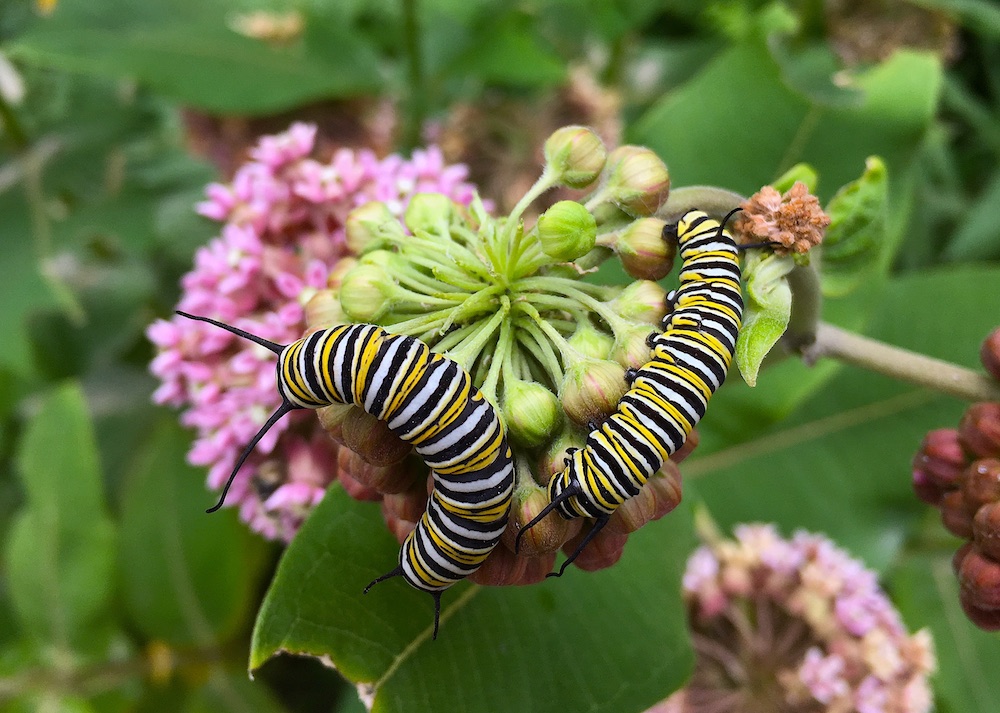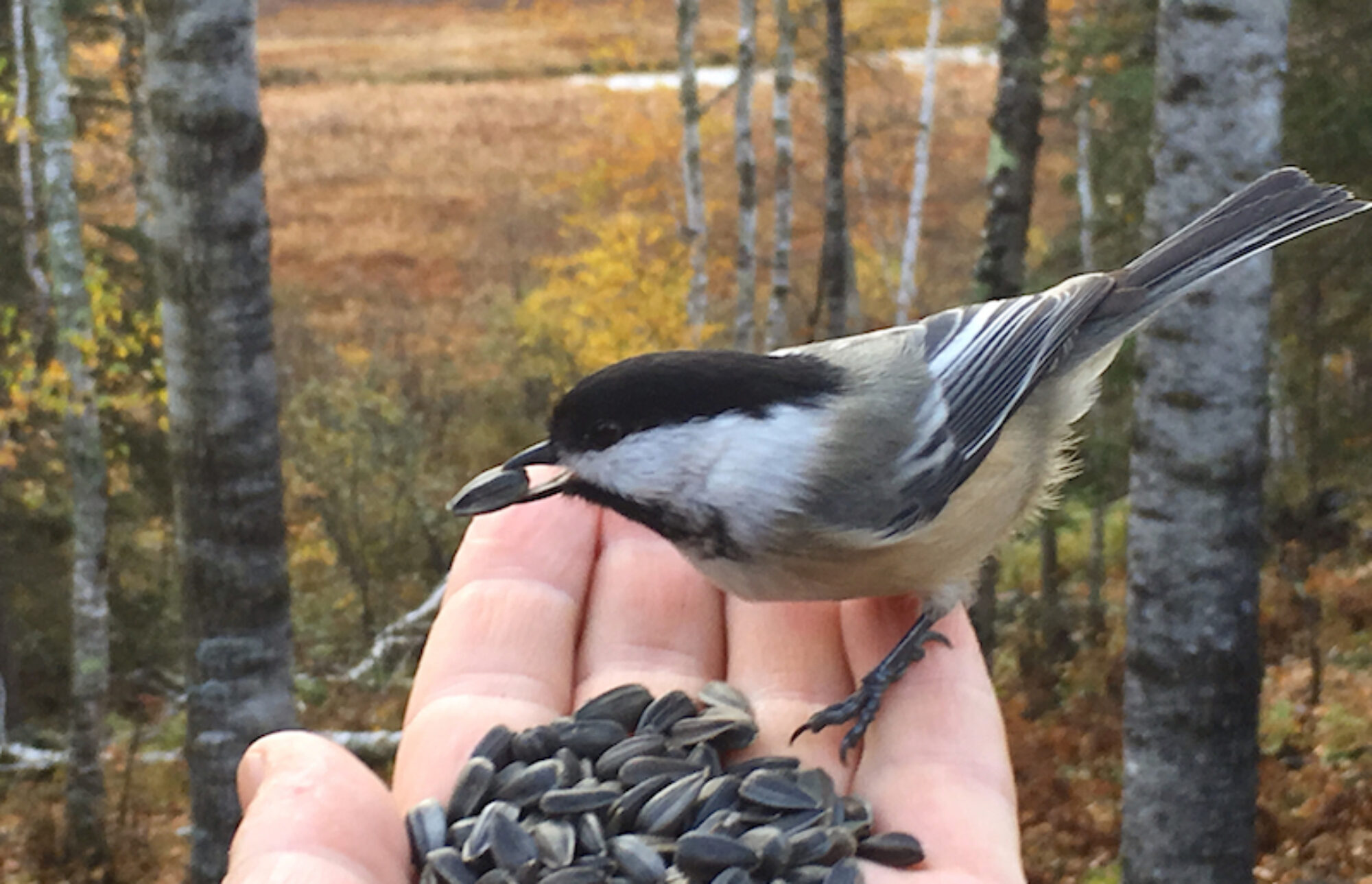
ELY, MINN. – If monarch butterflies across the continent are on the brink of a population collapse of no return, then in our little corner of the universe the caterpillars that turn into the iconic black and orange jewels are also living precariously close to the edge.
Literally and figuratively.
It’s been a good year for milkweed production on the little patch of road near our cabin that has come to personally symbolize a tiny island of hope for the embattled monarch butterfly. As such, it also was a seemingly productive year for monarch caterpillars.
That wasn’t the case last year when fewer plants were the host to even fewer caterpillars. One summer ago I found no caterpillars on the milkweed plants in July and don’t recall seeing any monarchs in our neighborhood the entire summer.
Conversely, last week I counted more than three dozen caterpillars on a patch of some 100 mature common milkweeds that has at least doubled its plant population from a year ago. A neighbor who keeps close track of all things related to monarchs and milkweeds agrees that it’s been a good year for the little pollinator oasis that’s located between our homes.
The next stage will be to see if the caterpillars build chrysalises/cocoons in the surrounding vegetation and survive various threats, including parasitism from tachinid flies, toxic chemicals and even physical safety from cars, trucks and service vehicles, which hug the shallow ditch as they race past, leaving a coat of dust and fuel exhaust on the plants and delicate caterpillars that grow within inches of the pathway.
If all goes well, we should notice a few monarchs floating over the ditches, across the road and into our yard as early as the end of next week. Those new butterflies will join others of their kind and make up the next generation of migrant monarchs that will fly to Mexico where they will overwinter before making a return trip to the United States next spring.
The collapse of North America’s monarch butterfly population has been well chronicled in recent years. According to butterfly conservation organizations and coalitions, such as Monarch Watch, the Xerces Society and the Monarch Joint Venture, monarch numbers in the past decade and a half have plummeted in the United States due to the lack of availability of milkweeds, which are the only host food plant for monarch caterpillars, a lack of nectar-producing plants due to the conversion of habitat to agricultural land, exposure to pesticides, climate change and illegal logging and deforestation within the Monarch Butterfly Biosphere Reserve near the Michoacan-Mexico State border, northwest of Mexico City, the Eastern monarch’s historic wintering territory.
A report issued by the National Wildlife Federation earlier this year claims the overall population of monarchs in North America declined by 27 percent from last year and 90 percent in the last two decades. According to the report, the population is measured by the number of acres occupied by the monarch butterflies in their overwintering habitat in Mexico. This past winter there were an estimated 109 million monarchs occupying just 7.2 acres, down from 150 million monarchs last year covering 9.9 acres.
The annual monarch migration that at one time was one of the great spectacles of the natural world has turned into a mere shadow of its once vibrant and brilliant self.
There is some good news in this otherwise grim story, however. Because of the nearly mythical status monarchs have achieved in the collective psyche of many Americans, grass roots efforts have sprung up across the continent in response to the perilous plight of these iconic creatures. Research by small but dedicated teams of students and staff at colleges and universities across the country, including Iowa State University, has helped draw in conservation organizations and a small army of concerned citizens who are working to create a patchwork of habitat across the landscape. Their goal is to aid monarchs in their annual pilgrimage from Mexico to the United States and back to Mexico.
Whether it’s enrolling private acres in the USDA’s pollinator program (bees are a primary pollinator of milkweeds), planting milkweeds and other nectar-producing plants in your backyard garden or even scattering a few milkweed seeds in a ditch later this summer, monarchs – and butterflies, moths, bees and pollinators of all kinds – continue to need a helping hand. What can you do to help?
Todd Burras can be reached at ou****************@***il.com.
